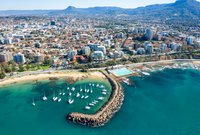Liverpool Property Market Update 2nd Half of 2020
In Q3 2020, Liverpool recorded a median house price of $740,000, and a median unit price of $487,000. This represents annual (Q3 2019 – Q3 2020) median price softening of -1.3% for houses and growth of 0.4% for units. Between Q3 2019 – Q3 2020 total sales slowed, down by -0.6% for houses (to 491 sales) and by -23.4% for units (to 160 sales), potentially due to low stock on the market. Despite a minor slowing in the house market, Liverpool has remained resilient in the face of COVID-19, making now a good time to continue to transact in the market.
In Q3 2020, Liverpool recorded a median house price of $740,000, and a median unit price of $487,000. This represents annual (Q3 2019 – Q3 2020) median price softening of -1.3% for houses and growth of 0.4% for units. Between Q3 2019 – Q3 2020 total sales slowed, down by -0.6% for houses (to 491 sales) and by -23.4% for units (to 160 sales), potentially due to low stock on the market. Despite a minor slowing in the house market, Liverpool has remained resilient in the face of COVID-19, making now a good time to continue to transact in the market.
Average vendor discounts between Q3 2019 and Q3 2020 have tightened for both property types, to -3.1% for houses and -6.3% for units. Liverpool provide unique opportunities. Sellers can achieve a final sale price closer to their first list price, whilst buyers can still benefit from a discount. Now is the time to transact.
In September 2020, house rental yields in Liverpool were recorded at 3.0%. In the 12 months to Q3 2020, the median house rental price increased to $520 per week, while average days on the market declined by -29.6% (to 19 days). Overall, this suggests Liverpool has a resilient rental market throughout COVID-19.
3 bedroom houses have provided investors with +2.2% rental growth annually, with a median rent of $460 per week.
Also, in September 2020, Liverpool recorded a vacancy rate of 2.7%, above that of Liverpool LGA (1.9%) but well below Sydney Metro (3.5%). Vacancy rates in Liverpool have continued to trend downwards amidst COVID-19 conditions, and now sit well below the Real Estate Institute of Australia’s healthy benchmark of 3.0%. This confirms there is still an ongoing healthy rental demand which should provide investors with confidence in a conducive investment environment in Liverpool.








